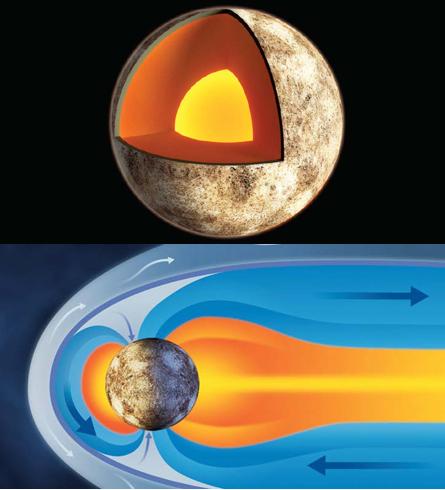If you haven't yet achieved your favorite tan level, join the Messenger spacecraft on its journey to the planet Hama

If you haven't achieved your favorite level of tan yet this year, we have a wonderful place for you! A place where the sun's radiation is 11 times higher than its radiation on Earth, it does not set for 4,000 hours, and its temperature exceeds 400 degrees Celsius. Most of this exotic place is not mapped, if you lose your way you can use a compass, thanks to the magnetic field, similar to that of the Earth, which exists there.
We are of course talking about the planet Hema. Only one spacecraft has visited the surface of this tiny planet: Mariner 10, a probe that mapped only about 45 percent of Mercury's surface in 1974. Thirty years have passed, and NASA's follow-up spacecraft, Messenger, set out to delve into the many mysteries of Mercury. The star, and between them the thick iron core and the magnetic field whose existence still needs to be understood.
The Messenger spacecraft, as compact as a warhead, is made of epoxy graphite material, and is loaded with seven scientific instruments. A critical part of the charge is a curved ceramic block that protects the probe from hot solar radiation. The shutter absorbs the heat of the sun and ensures the integrity of the devices by maintaining a temperature of 21 degrees Celsius. Messenger's "eyes" consist of a pair of digital cameras, one for viewing a wide field of view, and the other for viewing close-up detail. The cameras will image the remaining 55 percent of the planet's surface not mapped by Mariner 10. An alarm clock-sized magnetometer, it records the weak, if any, magnetic field that surrounds the planet Hema.
To decipher the star's core, MESSENGER is equipped with a laser altimeter that projects light from the surface and maps the star's topography. The device will also be able, during a few Mercury years (88 Earth days), to detect an oscillation
A tiny change in the planet's rotation, called libration, is supposed to reveal to scientists whether Mercury's core is solid or contains liquid. An array of light analyzers will store data on Mercury's chemistry and its thin atmosphere. The spectrometers installed on the spacecraft will look for iron on the surface and evidence of ice hidden in the sun-shaded craters at the star's poles.
Because the probe must slow its flight speed to enter the orbit around Mercury, the exploration of the planet Hema will take place only in 2011. The messenger will have to circle the Earth, twice Venus, and three times Mercury. As each transit reduces its speed and prepares it to enter the orbit of the Hema star on 18/3/2011 (we will, of course, continue and update).
The article appeared in Popular Science's Hebrew newsletter.
Planet Mercury in Hebrew astrology
More on the same topic
Mercury Messenger's Israeli connection: a Ricor micro refrigerator
NASA will launch a spacecraft to Mercury in about two weeks
